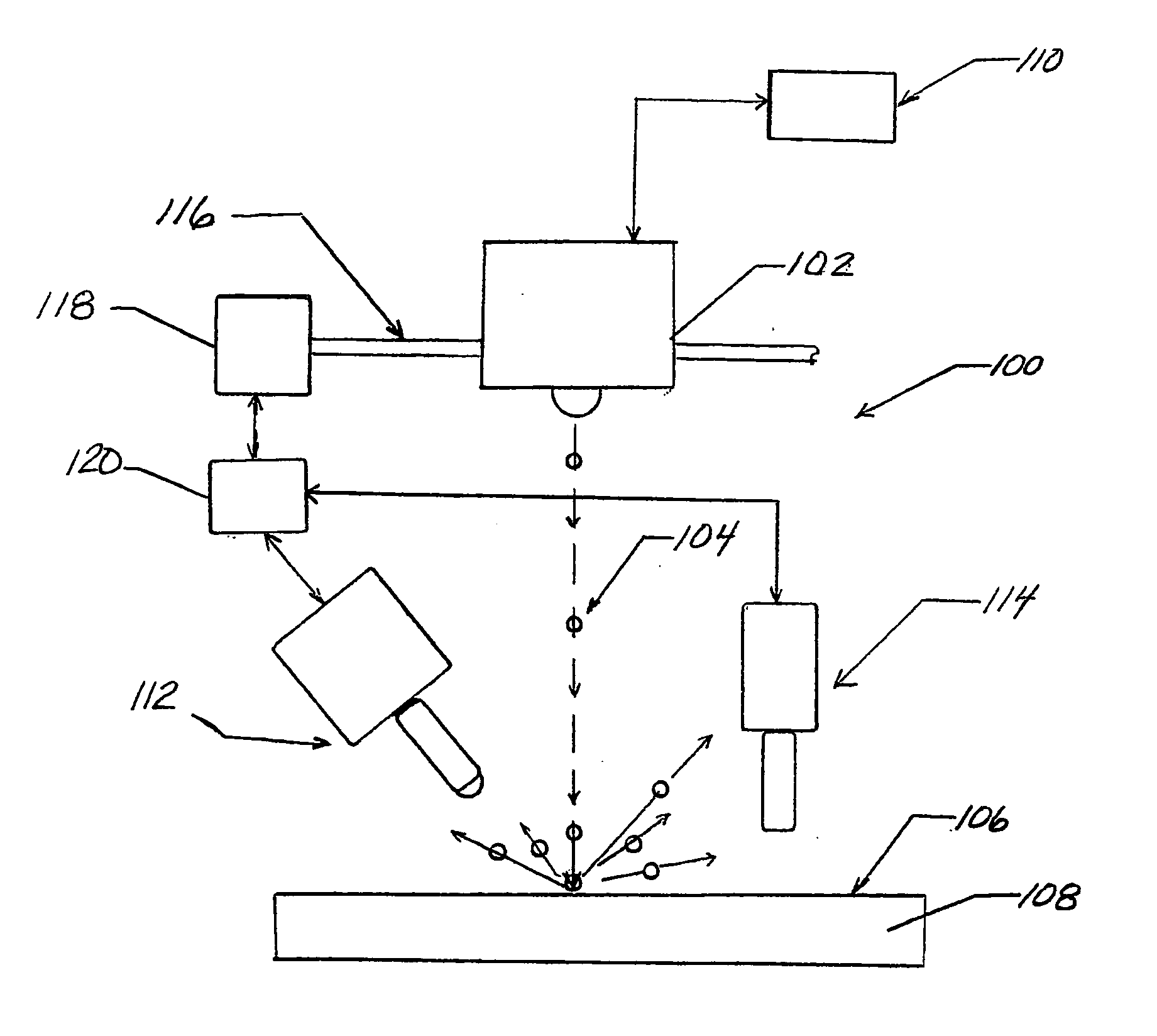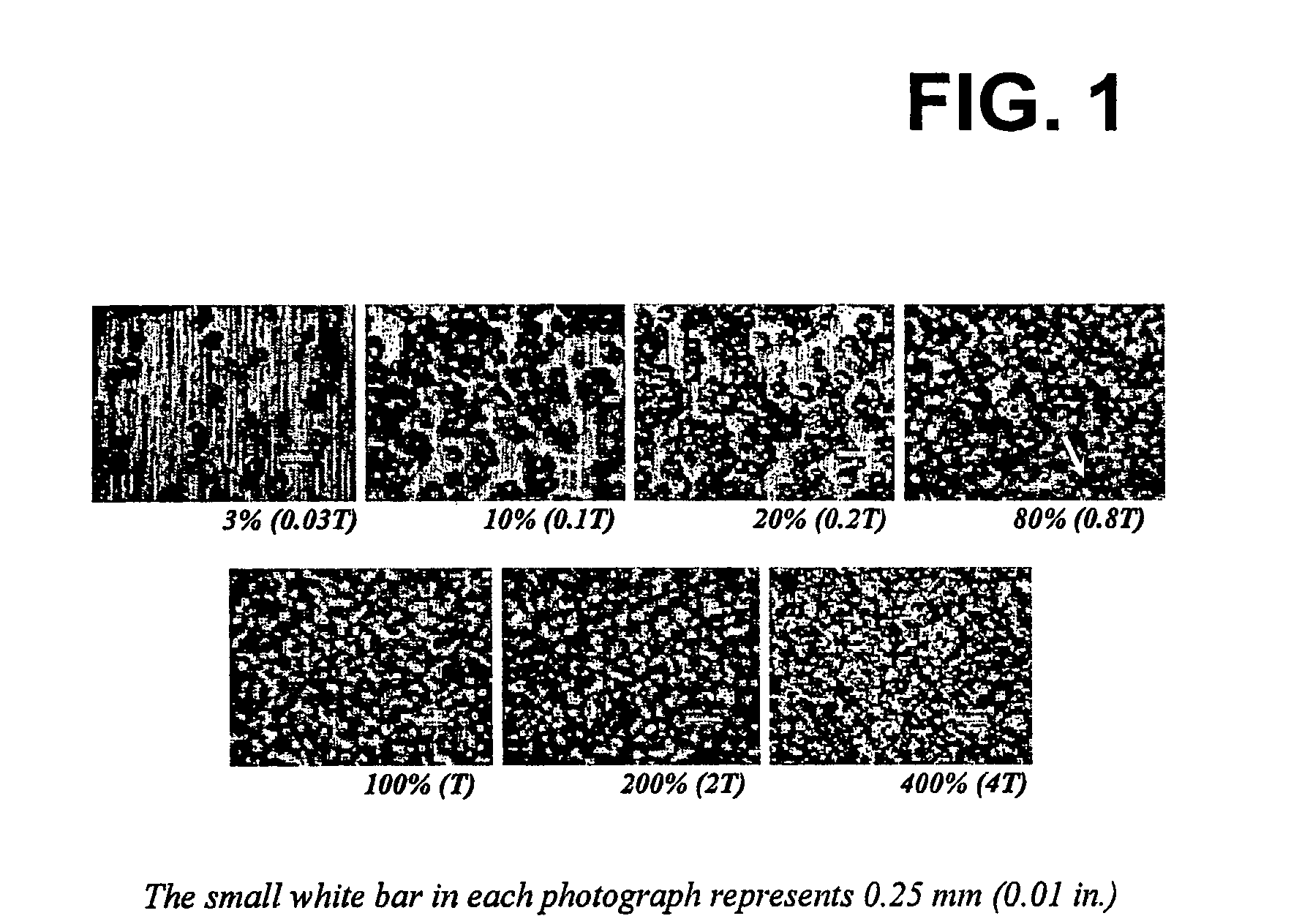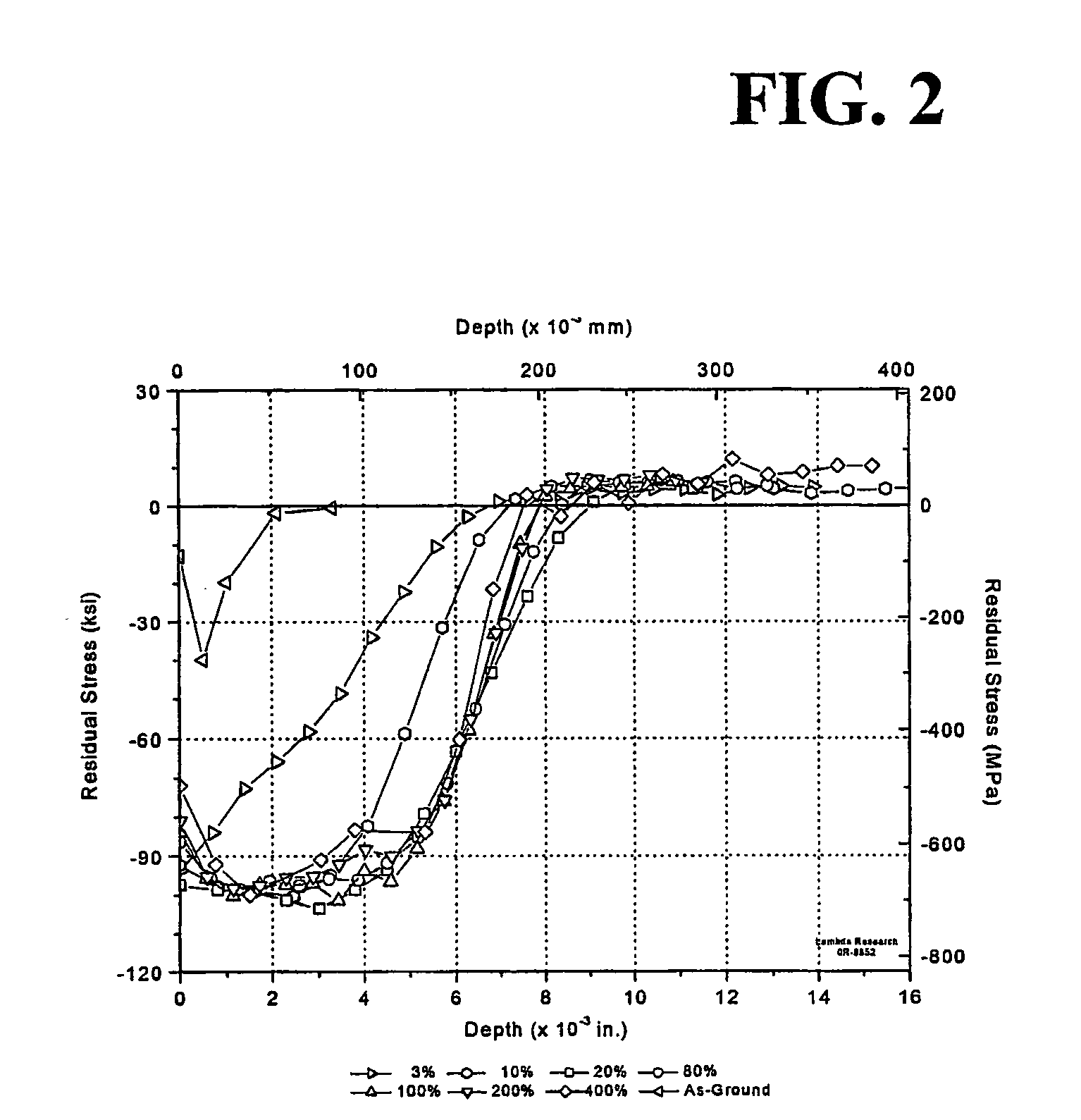Method and apparatus for providing a layer of compressive residual stress in the surface of a part
a residual stress and surface technology, applied in heat treatment apparatus, heat treatment process control, manufacturing tools, etc., can solve the problems of more rapid fatigue or stress corrosion failure, and high degree of surface deformation and cold working, so as to reduce cold working and processing time
- Summary
- Abstract
- Description
- Claims
- Application Information
AI Technical Summary
Benefits of technology
Problems solved by technology
Method used
Image
Examples
example 1
RESULTS
Referring to FIG. 1, representative metal surfaces are shown that have been peened, as described above, to various coverages. Defined coverage was based upon the time ratio to achieve 100% dimpling of the surface area. It should be apparent to those skilled in the art that the percent of area covered at 80% (0.8T) coverage approached that of 100% (1T) coverage. As shown, the arrow in the photograph for 0.8T identifies a relatively small undimpled area visible when viewed optically at 20× magnification. The undimpled areas of the specimens peened for less than 0.8T are obvious in appearance. The overall appearance of surfaces peened for times, 2T and 4T, did not change relative to that peened for time T.
FIG. 2 illustrates the residual stress-depth distributions that were obtained in the example for the various coverage levels, including the distribution for the as ground surface before peening. Except at the lowest coverage level, 3% (0.03T), classical shot peening distribut...
example 2
RESULTS
FIG. 8 illustrates, the residual stress-depth distributions that were obtained in the IN718 example for the various coverage levels. As shown with Example 1, except at the lowest coverage level, 5% (0.03T), classical shot peening distributions resulted, whereby residual compressive stress magnitudes reached a subsurface maximum and decreased gradually until small tensile stresses occurred at greater depths. For 5% coverage levels, the maximum compression is shown to have occurred at the upper surface. As in Example 1, since x-ray diffraction results provide an average stress over mostly un-impacted material at the 5% coverage level, it would be apparent to one skilled in the art that even the regions between impacts are in compression. The residual stress distributions for coverage levels less than about 10% (0.1T) exhibited systematic changes with coverage, whereby increasing coverage in this range resulted in increasing compressive stress magnitude at given subsurface depth...
PUM
| Property | Measurement | Unit |
|---|---|---|
| Fraction | aaaaa | aaaaa |
| Fraction | aaaaa | aaaaa |
| Fraction | aaaaa | aaaaa |
Abstract
Description
Claims
Application Information
 Login to View More
Login to View More - R&D
- Intellectual Property
- Life Sciences
- Materials
- Tech Scout
- Unparalleled Data Quality
- Higher Quality Content
- 60% Fewer Hallucinations
Browse by: Latest US Patents, China's latest patents, Technical Efficacy Thesaurus, Application Domain, Technology Topic, Popular Technical Reports.
© 2025 PatSnap. All rights reserved.Legal|Privacy policy|Modern Slavery Act Transparency Statement|Sitemap|About US| Contact US: help@patsnap.com



